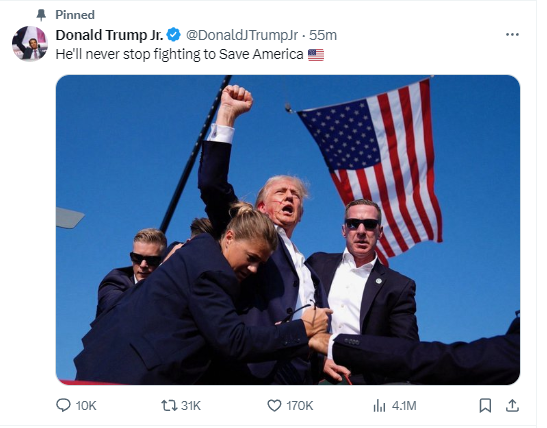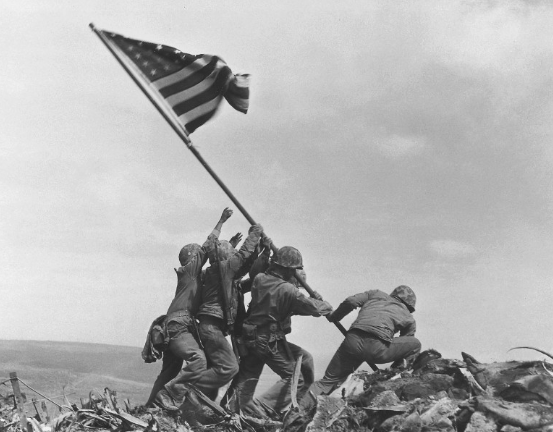by Martin Armstrong, Armstrong Economics:

This photo will live in American History. The former President flinched onstage when he was shot, grabbed at his face, and dropped to the ground. Moments later, Trump was helped to his feet by Secret Service agents, and he delivered definitive proof that he survived this assassin. He raised his right fist toward the sky and mouthed to the crowd, “Fight.” The Democrats have hated this man because he is not one of them and vowed to drain the swamp. Trump’s lips are pursed, his eyes narrowed, and his chin slightly raised. There are streaks of blood pouring from his right ear and streaking across his cheek. Trump is staring out beyond that moment. He is not looking at just the crowd; he is looking at the American public and beyond at the future that awaits our nation. Trump is defiant. He can sense the crisis we face. That man who tried to kill Trump failed, but he did create a moment that will be remembered for eternity. This is rapidly becoming the indelible image of not just Trump’s campaign but also of our politically torn society, which has brought us to the very edge of political crisis and conflict.
TRUTH LIVES on at https://sgtreport.tv/
This photo taken by Evan Vucci of the Associated Press, with Trump standing against a clear blue sky and four Secret Service agents clutching at him, prepared to take a bullet in defense of liberty, will forever be remembered. An American flag floats over the scene, creating an iconic image that, from history’s perspective, will no doubt emerge akin to hosting the American flag over the battle-scarred Japanese island of Iwo Jima. This photo will symbolize Trump forever.

The very idea of assassinating leaders such as President Lincoln and President McKinley was part of an international trend that began during the 19th century and was based upon the theory that some dramatic deed was necessary to spark a revolution. It was called the “Propaganda of or by the deed,” and it advocated physical violence in a dramatic, provocative public act perpetrated against political enemies to inspire others to act in a popular mass rebellion or revolution. This was a political philosophy that was part of the radical thought process that was emerging with Marxism. Still, it was not precisely advocated by Marx, who was generally a revolutionary.
Read More @ ArmstrongEconomics.com




